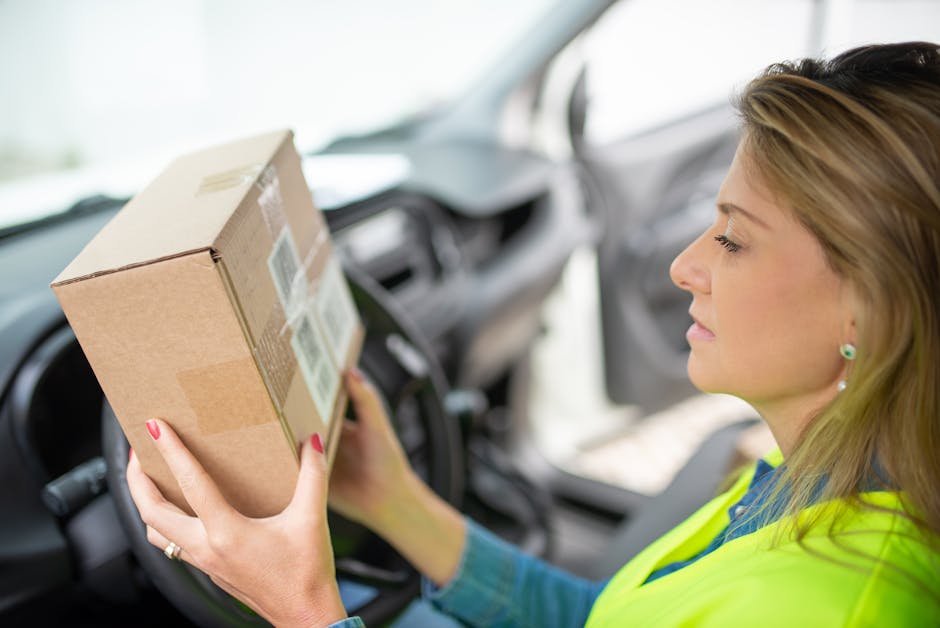Advanced Order Tracking Systems: Real-Time Visibility for E-Commerce
Order tracking has become a cornerstone of the e-commerce experience, giving customers and businesses the ability to monitor shipments in real time. With increasing consumer demand for transparency and fast delivery, advanced order tracking systems have risen to prominence. These tools allow businesses to provide detailed updates on shipping status, delays, and estimated arrival times, fostering trust and improving customer satisfaction.

While traditional tracking systems relied on static updates, modern solutions utilize advanced technologies like GPS, cloud computing, and artificial intelligence to deliver dynamic, real-time visibility into order progress.
The Evolution of Order Tracking Systems
In the early days of e-commerce, order tracking was a straightforward but limited process. Customers received tracking numbers that could be entered into courier websites to check shipment status. This system often provided vague or outdated information, frustrating consumers. The emergence of digital platforms and logistical advancements paved the way for more sophisticated systems.
Today’s advanced order tracking solutions integrate directly with e-commerce platforms, offering live updates through mobile apps, emails, or SMS notifications. Companies like Amazon and Shopify have set benchmarks in this space by incorporating features like delivery time predictions and interactive maps for real-time package location.
Recent statistics indicate that 87% of online shoppers consider real-time tracking a critical feature during their purchasing journey (Statista). With customer expectations soaring, businesses are leveraging technology to meet demands while streamlining their operations.
Technological Foundations Driving Real-Time Visibility
Advanced order tracking systems rely on a blend of modern technologies to provide unparalleled visibility. GPS technology plays a central role by enabling precise location data for shipments at any given time. Coupled with IoT-enabled devices, businesses can now track not just the location but also environmental factors like temperature and humidity during transit, essential for industries like pharmaceuticals and food delivery.
Cloud computing enhances scalability and accessibility by ensuring data is updated instantly across multiple channels. Cloud-based platforms allow both customers and businesses to access consistent information from any device without delays or discrepancies.
Artificial intelligence (AI) adds another layer of sophistication. Predictive analytics powered by AI can estimate delivery times based on historical data, traffic conditions, and weather forecasts. Companies such as FedEx are using AI-driven models to reduce delays and optimize delivery routes (FedEx).
Benefits for E-Commerce Businesses
Adopting advanced order tracking systems offers numerous advantages for businesses operating in the competitive e-commerce market. Improved customer satisfaction is perhaps the most apparent benefit. Providing transparent updates fosters trust and reduces customer complaints related to delivery issues.
Operational efficiency is another significant gain. Real-time data allows logistics teams to address potential disruptions proactively, such as re-routing shipments in case of unforeseen delays. This leads to cost savings by reducing failed deliveries or refunds due to dissatisfaction.
- Enhanced Brand Loyalty: Consistently reliable tracking services can turn one-time buyers into repeat customers.
- Reduced Operational Costs: Automated notifications minimize the need for customer service intervention.
- Data-Driven Insights: Businesses can analyze tracking data to optimize inventory management and improve future logistics strategies.
A report from McKinsey highlights that companies implementing advanced logistics solutions experience a 10–15% reduction in overall supply chain costs (McKinsey).
The Role of Consumer Expectations
The shift toward advanced tracking systems is largely driven by evolving consumer behavior. Modern buyers demand convenience and control throughout their shopping experience. A survey by PwC revealed that 71% of consumers are willing to pay more for services that offer enhanced transparency (PwC). This trend has pushed businesses to adopt robust solutions that cater directly to these preferences.
Younger demographics, particularly millennials and Gen Z shoppers, prioritize speed and visibility over other factors like price. Features such as live maps showcasing the exact location of a package resonate strongly with these groups. Catering to these demands not only enhances user experience but also builds brand credibility among tech-savvy audiences.
Challenges in Implementing Advanced Systems
While advanced order tracking systems offer significant benefits, they are not without challenges. One primary hurdle is cost. Developing or integrating sophisticated systems requires substantial investment in technology infrastructure, which may not be feasible for smaller businesses.
Data security is another critical concern. Handling large volumes of sensitive information such as customer addresses and shipment details necessitates robust cybersecurity measures. Any breach could harm customer trust irreparably.
Lastly, ensuring seamless integration between various stakeholders (e-commerce platforms, logistics providers, and end-users) can be complex. Businesses must invest in training employees and upgrading legacy systems to facilitate smooth adoption.
The Future Outlook of Order Tracking
The trajectory of advanced order tracking points toward even greater innovation. Technologies like blockchain are being explored for their potential to enhance transparency across the supply chain by providing immutable records accessible to all parties involved.
Autonomous delivery methods such as drones and self-driving vehicles promise faster shipments while integrating seamlessly with existing tracking systems for real-time updates. Augmented reality (AR) interfaces could revolutionize how customers interact with tracking data by visualizing package routes in three dimensions.
The emphasis on sustainability is also expected to grow within this space. Future systems might incorporate carbon footprint calculators alongside traditional features so consumers can make environmentally conscious choices when selecting shipping options.
The rapid adoption of advanced order tracking systems signifies a transformative shift in e-commerce logistics. By leveraging cutting-edge technologies like GPS, AI, and cloud computing, businesses are addressing consumer demands for transparency while optimizing operational efficiency. Features such as real-time updates and predictive analytics have redefined how customers engage with online shopping experiences.
As challenges like implementation costs and data security persist, ongoing innovation will likely focus on overcoming these hurdles while introducing new capabilities such as blockchain integration and sustainable practices. For businesses aiming to stay competitive in this dynamic industry, investing in state-of-the-art tracking systems isn’t just an option, it’s a necessity that could determine long-term success.
